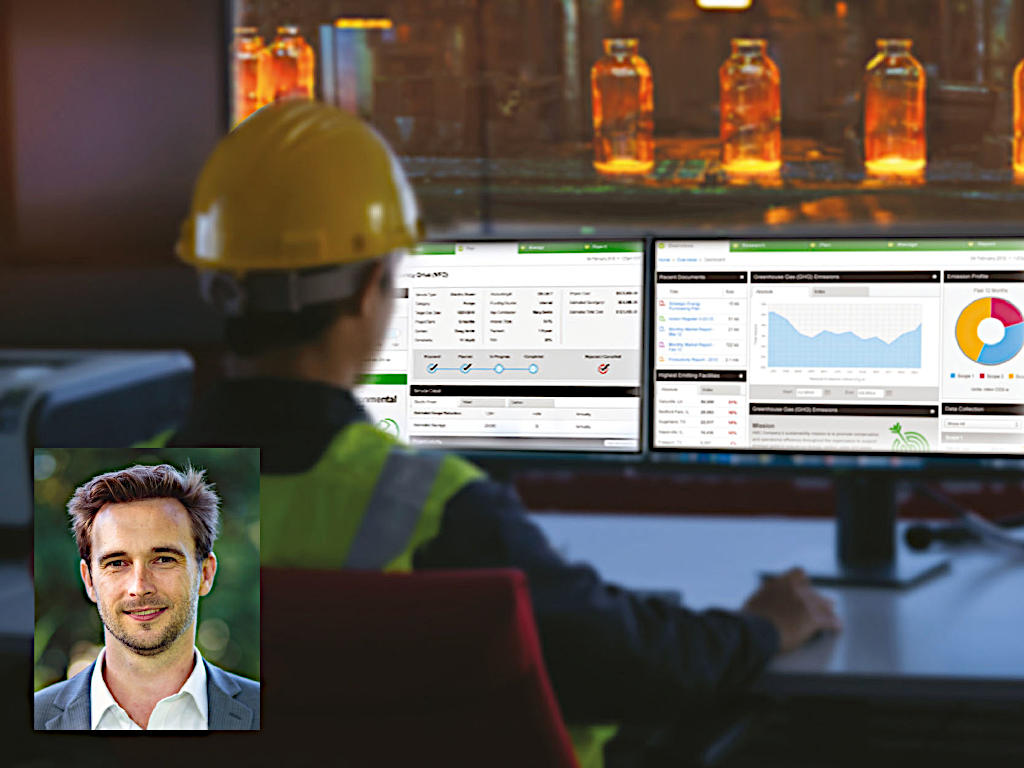To navigate current and future challenges, glass manufacturers must adapt. As an energy-intensive industry, glass manufacturing produces approximately 86 million tonnes of carbon dioxide annually. With the race to meet global emissions targets encompassing all industries, glass faces other fundamental challenges – from supply chain issues to ageing facilities, costly inefficiencies to consumer demand for sustainable products – all threatening long-term resilience.
While there is no simple solution to this matrix, transformation is necessary. In today’s digitally empowered world, electrification and digitalisation map the road to resilience. While most glass manufacturers recognise the benefits of electrification, implementing it can be complex. There is no one size that fits all.
Determining a roadmap to electrification requires specialist knowledge to answer the needs of varying facilities, cultures, and geographies. Armed with this insight, complexity can be unravelled to deliver both obvious and discrete benefits. Here we explore some of the variables that glass leaders should consider on their path to electrification and on their path to adopting sustainable glass.
Way beyond the furnace
The first aspect of electrification that manufacturers often consider is the replacement of traditional fossil fuel-fired smelter systems with electric furnaces. Fuel combustion accounts for 75–85% of CO2 emissions in glass manufacturing, with electric furnaces powered by green electricity providing the possibility of zero CO2 emissions and lower energy use overall. We need to look beyond the furnace to the wider context of site integration.
Setting out a roadmap for electrification is about integrating new equipment and ensuring current infrastructure is fit for purpose. Glass electrification rarely involves greenfield sites. This means an in-depth understanding of the status quo and what can be modernised or modified so existing sites can be utilised efficiently and effectively.
What equipment is there, and what equipment has aged? What needs replacing? How do we increase capacity smartly without just ‘bolting on’ xxMW? For example, some engineers will often answer the need for increased capacity by simple copy-paste strategies, not considering there might be headroom on the existing connection or another megawatt of optimisation within the existing facility. And what does that mean for your redundancy? What does that mean for your energy efficiency? All those considerations need to be tackled holistically.
Looking to the grid
Of course, the real challenge is ensuring access to reliable, cost-effective and environmentally-friendly sources of electricity – especially when considering that such a system will require at least four times the energy. Each electrification project is complex, and there is often more than one way to achieve success, also considering trade-offs with CapEx and OpEx and physical constraints at the site or the (too slow) upgrade plans of local grid operators. Throw energy cost and availability into the mix alongside that, and grid connection is often the biggest pain point.
Overcoming this requires a deep understanding of the current grid capacity, and how it can be utilised to maximise efficiency while working with the network supplier to ensure they fulfil specific needs. In turn, this requires experts to determine what the grid can handle, how to utilise it creatively, ask the right questions, make the right requests and present ideas outside the usual boxes. Network suppliers are often binary in their approaches providing ‘Approved’ or ‘Rejected’ answers without explanation. Therefore, working with specialist engineers that bring various strategies and scenarios to the table, anticipating what the operators might need to hear, is critical to achieving that all-valuable ‘Approved’.
We must also consider the geographical implications of energy cost and grid characteristics. For example, what works in Spain may not work in another European country, let alone APAC or the US. Here is where an international partner can bring local consideration to portfolio transformation.
People and culture come first
When considering any kind of cutting-edge transformation, it is important to understand it is not just a technical problem to solve but also a human one. Determining a roadmap to electrification is as much about talent as it is about technology. Each individual national culture has a role to play, as does team culture.
Leaders need to align the people behind innovation to ensure they are committed to transformation, open to change and ambitious. Change can be daunting but is necessary to survive and it can only be successful if teams are on board. This doesn’t mean doing it alone. Remember: choosing partners and experts who can help navigate wide-ranging cultural challenges as much as technical ones are vital and can make the difference between success and failure.
Invest in clear and objective decisions
The green glass industry’s furnace revolution will require huge investments in CapEx in the coming decades. Investing in the right level of due diligence upfront will result in a more efficient allocation of capital and an accelerated decarbonisation programme. It’s well worth spending time on it now with the right partners who have a strong mix of consultancy, technology and implementation experience.
You’ll be able to hear more about this roadmap in the upcoming Glasstrend event, hosted by Schneider Electric at Intencity and taking place from 17–18 October.


